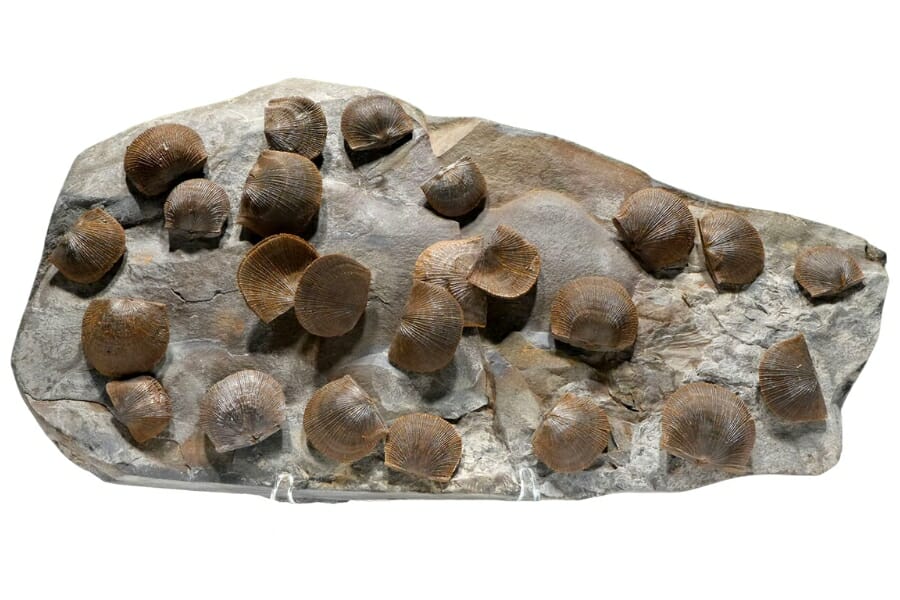Every fossil tells a story that gives us a peek into what life was like millions of years ago. But when it comes to finding New York fossils, it’s not always a walk in the park. Without the right guidance, you might just end up digging without finding anything.
Knowing where to look is key. And that’s where we come in! We’ve got the scoop on the proven spots to find fossils in New York.
To give you a sneak peek, some of these spots include the Penn Dixie Fossil Park & Nature Reserve and the John Boyd Thacher State Park. Our creeks, rivers, and lakes are also great fossil-hunting places.
Aside from this, we’ll share with you the common and rare fossils you might stumble upon when you go here. With patience and a keen eye, you’re on your way to discovering the ancient wonders that New York’s ground has preserved for eons!
The Fossils Of New York You Can Find
Our state is popularly known for being a concrete jungle, but within its large area lie diverse landscapes where natural treasures hide. In fact, you can explore many great rockhounding sites in New York.
But if you want to focus your attention on fossils, there are certain specific spots where you can find them. Before we go into the details of those places, let’s first go through the different rare and common fossils in New York:
- The extensive local experience and understanding of our team
- Input from multiple local fossil hunters and fossil groups
- The accessibility of the various locations
- Safety and potential hazards when collecting
- Private and public locations
- A desire to include locations for both experienced fossil lovers and those who are just starting out
Using these weights we think we’ve put together the best list out there for those who love finding great new fossils for our collections!
Common New York Fossils
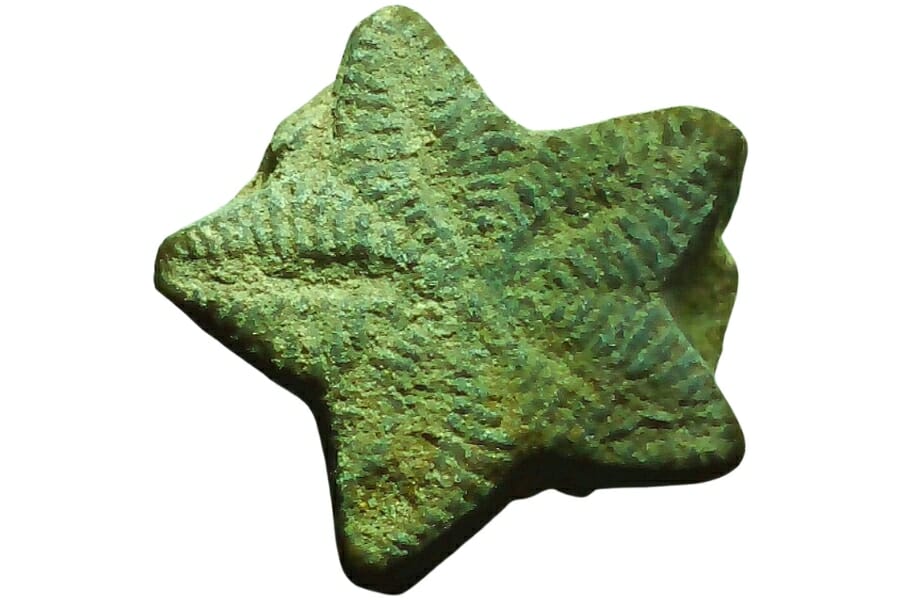
It pays to know the most common fossils in New York, especially if you plan on exploring the sites we recommend in this article. Below are some of them:
- Corals
- Brachiopods
- Crinoid
- Trilobites
- Graptolites
- Cephalopods
New York State Fossil – Eurypterid
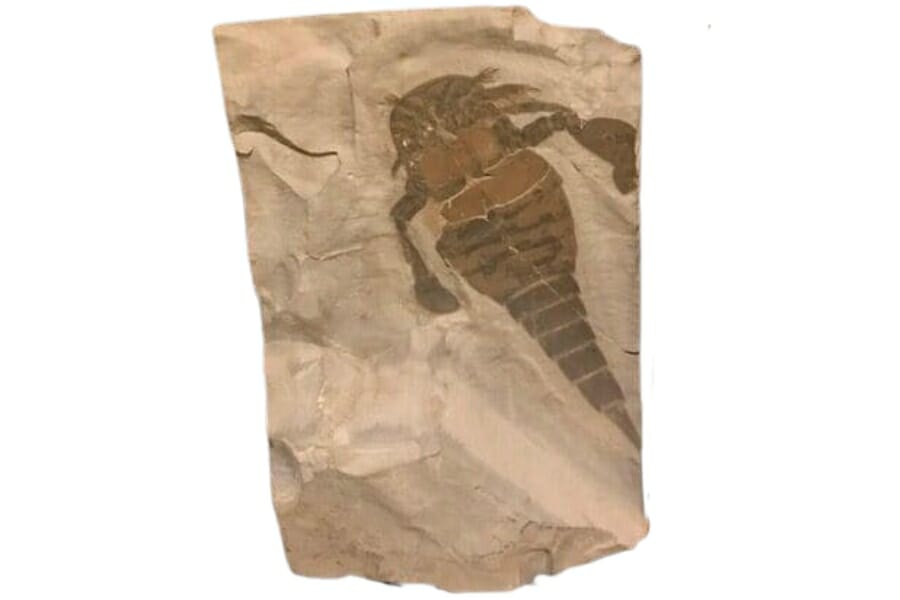
Often called a “sea scorpion,” Eurypterid is an ancient sea creature that swam the Earth’s oceans around 400 million years ago. With a flat, streamlined body, they looked like a blend between modern scorpions and lobsters that lived underwater.
Some species of Eurypterids were small, but others grew to be massive, with the largest one, the Jaekelopterus, reaching up to 8 feet long! And despite their nickname “sea scorpion,” they weren’t all strict sea dwellers. Some species actually lived in freshwater habitats like lakes and rivers.
Fossils of these amazing creatures have been found in various parts of New York. This connection is so strong that our state named the Eurypterid its official state fossil in 1984.
Imagine, millions of years ago, these incredible sea scorpions were roaming the waters that now makeup parts of modern-day New York!
Rare New York Fossils
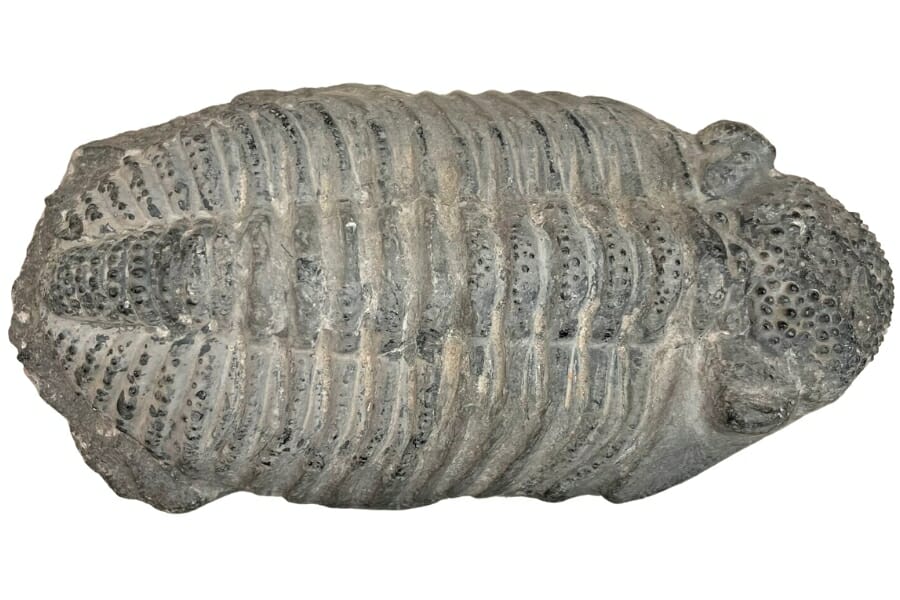
Now, here’s the exciting part: the valuable rare fossils of New York! Make sure to familiarize yourself with what they look like before you proceed with your exploration so it will be easier for you to identify them.
- Blastoids
- Phacops
- Rugose coral
- Favosites
- Eurypterids
The Best Places To Find Fossils In New York
Onto the meat of the matter: the proven spots to find fossils in Florida. Below are five of our most recommended ones, including all the details you’ll need to know before your visit here:
Always Confirm Access and Collection Rules!
Before heading out to any of the locations on our list you need to confirm access requirements and collection rules for both public and private locations directly with the location. We haven’t personally verified every location and the access requirements and collection rules often change without notice.
Many of the locations we mention will not allow collecting but are still great places for those who love to find beautiful rocks and minerals in the wild without keeping them. We also can’t guarantee you will find anything in these locations since they are constantly changing.
Always get updated information directly from the source ahead of time to ensure responsible rockhounding. If you want even more current options it’s always a good idea to contact local rock and mineral clubs and groups
Penn Dixie Fossil Park & Nature Reserve
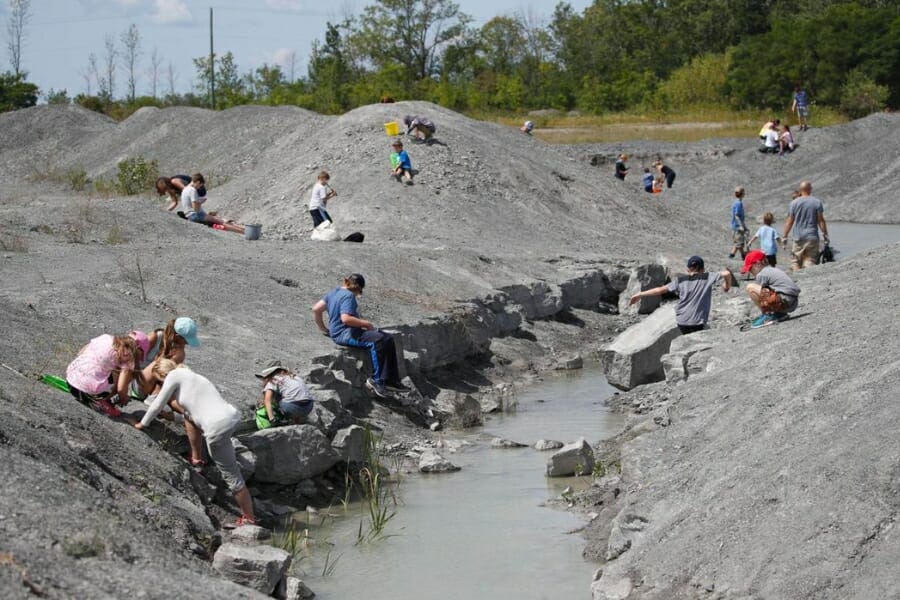
Penn Dixie Fossil Park & Nature Reserve is renowned worldwide among fossil enthusiasts and geologists for its rich layers of history, holding remnants of life from over 380 million years ago.
What’s so great about Penn Dixie is that you don’t need to be an expert to find fossils here. The rock layers are pretty close to the surface, so with just simple tools like a hammer and chisel, even beginners can uncover amazing specimens.
If you’re wondering how to get here, Penn Dixie is conveniently located. It’s just a short drive from downtown Buffalo. The park is equipped with walking trails and designated digging areas, making it accessible and easy to explore for anyone.
Where and what fossils to find in Penn Dixie Fossil Park & Nature Reserve
Renowned by the Guinness World Records as the World’s Largest Fossil Dig, the Penn Dixie Fossil Park & Nature Reserve has corals, brachiopods, crinoid columnals, pelecypods, gastropods, and cephalopods.
This spot also boasts of having well-preserved thumb-sized trilobite specimens of phacops and greenops.
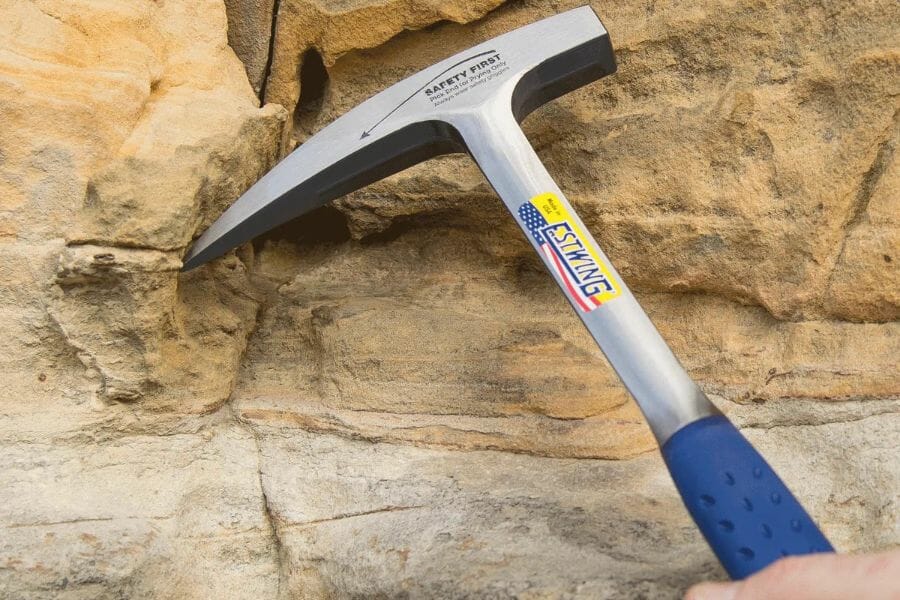
The tools every fossil hunter will need
When you're out looking for fossils having the right tools for the job is really going to make or break your success. You don't need a lot for most trips but there are a handful that are critical and will make your life a lot easier.
We get asked a lot about the equipment we use. Over the years we've found a handful of tools that we recommend to both new and experienced fossil hunters which we outline in great detail in our complete rockhounding tools and kit guide. These are quality options that also happen to be relatively inexpensive.
Below are the basic tools that make your life so much easier and save you a ton of time. Check out the full guide to see everything we recommend bringing. One quick note, as an Amazon Associate I earn from qualifying purchases but we try very hard to only recommend gear we would use ourselves and often recommend brands you can't find on Amazon.
At a minimum you should have:
1 - Sturdy rock hammer: The Estwing Rock Pick is our standard
2 - Rugged chisels: Try Kendo' 3-piece Chisel Set
3 - Compact shovel: The Koleiya 28-inch shovel works well
4 - Rock screen pan: The Wazakura Soil Sieve Set fits the bill
5 - Eye protection: DeWalt Safety Glasses are cheap and comfortable
6 - Head protection: Malta's Safety Helmet has been our go-to
7 - Jewelers lens with at least 20x magnification: Jarlink's Jewelers Loop is perfect
The fossil-finding books that we use most
There are also a few books that have been extremely helpful in the search for gems. These books have great recommendations and tips:
National Audubon Society Field Guide to Rocks and Minerals: North America
Northeast Treasure Hunter's Gem & Mineral Guide
Earth Treasures: The Northeastern Quadrant
We provide links to find these tools on Amazon but some can also be found at your local hardware stores. For more recommendations check out the link to our full tool guide above.
John Boyd Thacher State Park
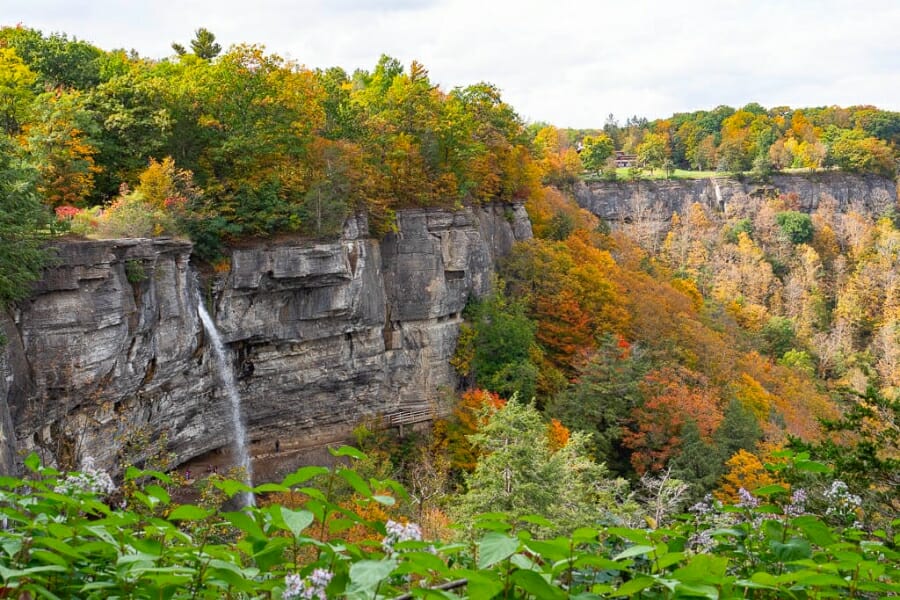
Nestled just a bit west of Albany, John Boyd Thacher State Park is not only a haven for nature lovers but also a treasure trove for fossil enthusiasts. Its towering limestone cliffs hold fossils from nearly 400 million years ago.
What’s super cool about these cliffs is the abundant fossil beds. With a keen eye, you can spot remnants of ancient sea creatures. The thrill of spotting a fossil imprint on a rock, knowing it’s been there for eons, is just unbeatable.
The great news is that John Boyd Thacher State Park is conveniently located, so it’s easy to get to. If you’re driving from Albany or nearby areas, you’ll find it’s just a short and scenic drive away.
Once you’re here, there are well-marked trails and viewing areas. The park also offers fantastic views of the Hudson-Mohawk Valleys and the Adirondack and Green Mountains.
Where and what fossils to find in John Boyd Thacher State Park
If you explore here, you have the chance to find fossils of Tentaculites (mollusk-like shells), Howellella (a type of brachiopod), Perdita (bean-shaped ostracod), stromatoporoid, stromatolites, Gypidula brachiopods, and favorites.
Cayuga Lake
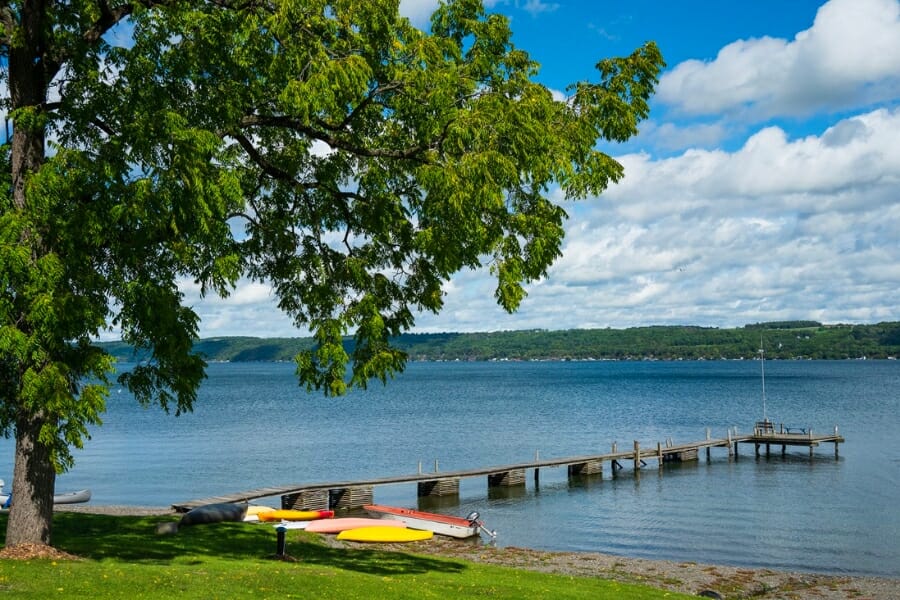
Cayuga Lake stretches about 38 miles long, making it the longest of the Finger Lakes. But here’s a secret: this lake isn’t just about picturesque views and watersports— it’s also a hotspot for fossil hunters!
The shores of the lake, especially in certain areas with exposed rocks and cliffs, are home to marine fossils as it was submerged under a warm, shallow sea millions of years ago.
Since Cayuga Lake is located in the central part of New York, getting here is pretty straightforward. Whether you’re coming from Syracuse, Rochester, or any other nearby city, just follow the well-marked roads leading to the Finger Lakes region, and you’ll find yourself here in no time.
Where and what fossils to find in Cayuga Lake
You can find Phacops (trilobites) and rare blastoids, among other marine fossils, when you explore Cayuga Lake.
Clear Creek
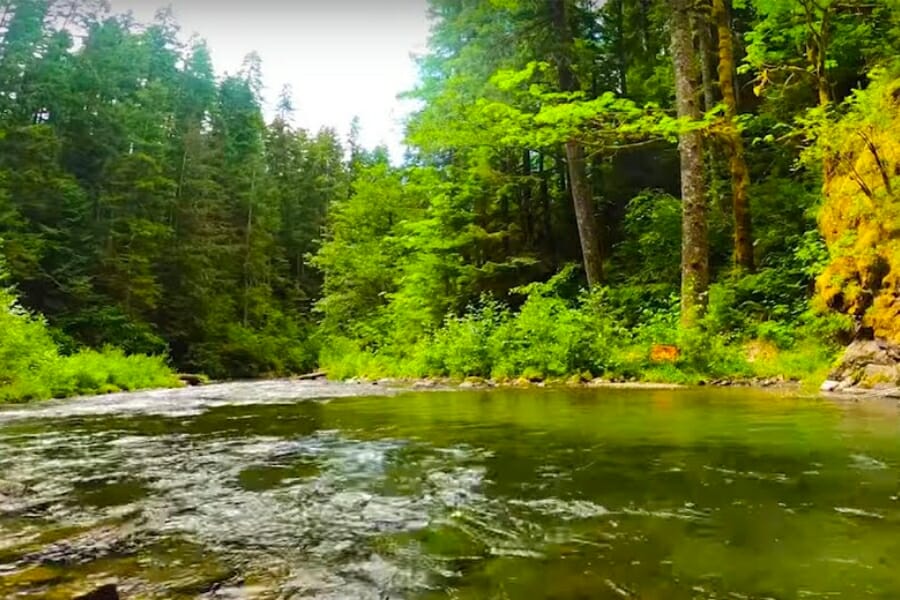
Tucked away in our beautiful landscape, Clear Creek winds its way through the countryside. It has carved out exposed layers of rock over time. These rocks, if you look closely, are sprinkled with fossils!
The ancient sea that once covered parts of New York left behind all kinds of marine creatures. This has made this creek a treasure trove for those with keen eyes.
Good thing, getting here is simpler than you might think. Clear Creek is just a drive away from many of our state’s major cities. Roads leading to the area are usually well-maintained, with signs pointing you in the right direction.
Where and what fossils to find in Clear Creek
You’ll find fossils of Spirifer, Ambocoelia, Athyris, Camarotoechia, Productella, Leptodesma, Edmondia, and Sphenotus.
Chemung River
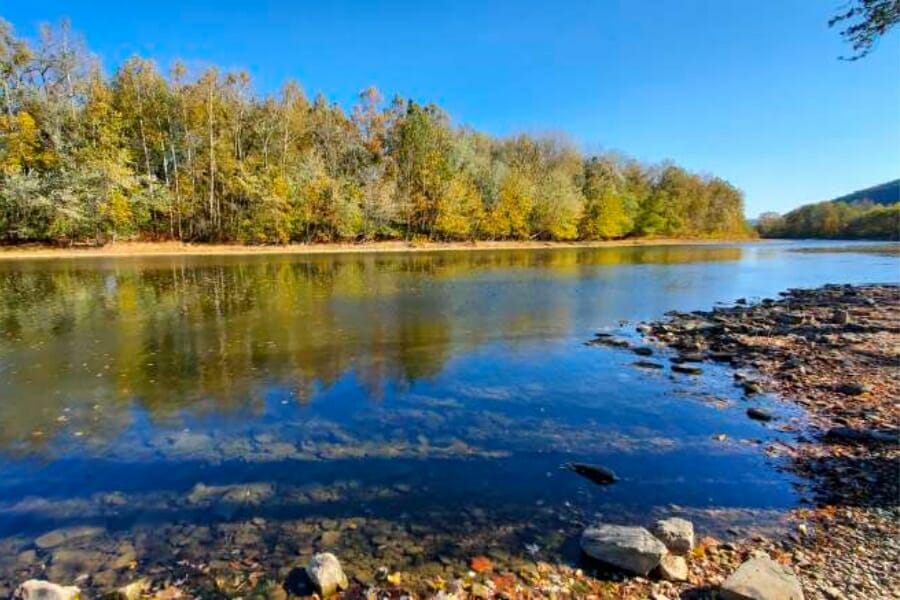
The Chemung River, flowing gracefully through the southern tier of New York, is like a flowing museum. As it winds its way through the landscape, it reveals layers of rock that are loaded with incredible fossils.
The banks and bedrock of the Chemung River are known for their rich fossil content. These remnants come from a time when this region was submerged under an ancient sea. If you stroll along its banks or wade in its shallows, you might discover fossils of ancient sea creatures.
If you want to go here, the Chemung River is easily accessible. Roads leading to this area are well-marked. There are also multiple points along the river, like parks and public access areas, where you can start your exploration.
Where and what fossils to find in Chemung River
Among the interesting fossils you can find here are Macgeea, Tabulophyllum (rugose corals), and Ambocoelia (brachiopod).
Other Top Places To Find New York Fossils By Region
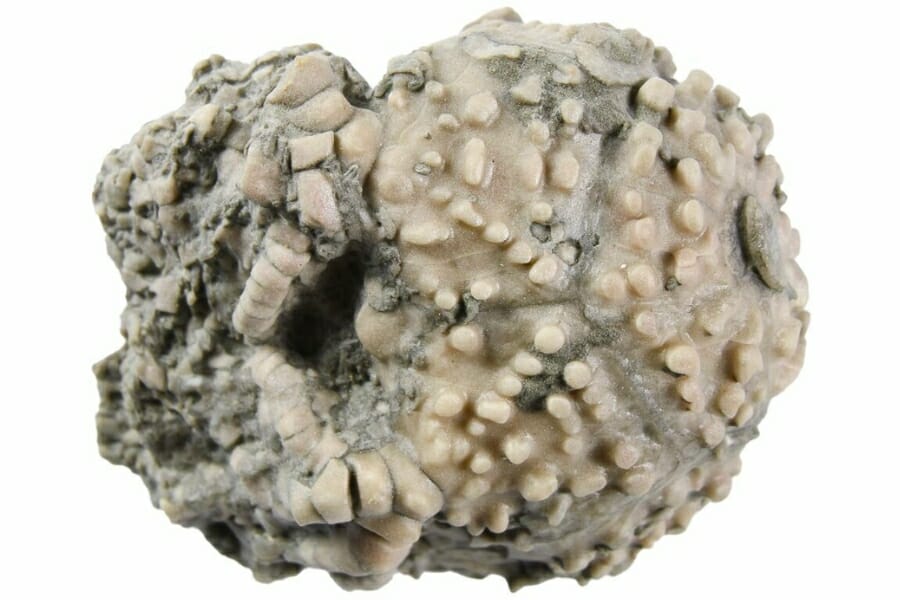
Aside from our top five recommended spots to find fossils in New York, you have plenty of other options. Below are some more proven spots that bear fossils:
| Location | Fossils |
| Normanskill Formation in Albany County | Graptolites |
| Terra Cotta Quarry in Allegany County | Spirifer, Mytilarca, Schizophoria, Camarotoechia, Productella, Edmondia, Schizodus, Sphenotus, Leptodesma, Grammysia |
| Owasco Lake in Cayuga County | Brachiopods |
| Quarries and streambeds in Chautauqua County | Spirifer, Camarotoechia, Productella, Ambocoelia, Mytilarca, Sphenotus |
| Gorge of Bump’s Creek in Chenango County | Spirifer, Schizodus, Other brachiopods |
| Ordovician Chaumont Formation of Black River Group in Jones Quarry in Clinton County | Brachiopods, Gastropods, Corals |
| Along railroad tracks at Hudson Point in Columbia County | Trilobites |
| Davenport Center above the Charlotte River in Delaware County | Actinopteria, Chonetes, Camarotoechia, Phacops |
| Fogelsanger Quarry in Erie County | Favosites |
| Avery’s Gully in Erie County | Brachiopods Rhipidomella |
| Eighteen Mile Creek on Lake Erie Shore in Erie County | Brachiopods |
| US-20 bridge over Spring Creek in Genesee County | Trilobites, Diverse pyritized fossils |
| Tri-County Asphalt Stone Company, West Cave Mountain quarry in Green County | Triloboxylon |
| Passage Gulf in Herkimer County | Eurypterus, Pterygotus, Seaweeds |
| Lang’s Quarry on Brewer Road in Herkimer County | Eurypterids |
| Black River Hydroelectric Plant above Black River Formation in Jefferson County | Brachiopod-Doleroides, Cephalopods |
| Trenton limestones in area exposures in Black River Valley in Lewis County | Brachiopods, Trilobites |
| Creek in Geneseo area, Livingston County | Coral |
| Fall Brook Coral Bed in Livingston County | Corals, Brachiopods, Genera, Bryozoa, Trilobites, Crinoids, Tenticulites, Gastropods, Bivalves, Sponges |
| Several horizons in Mottville Limestone in Madison County | Brachiopods, Trilobites |
| Area exposures of Pittsford area in Monroe County | Ostracods, Lingula, Pelecypods, Phyllocarids, Eurypterids |
| Exposures on Steuben Creek west of Trenton Gorge in Oneida County | Graptolites |
| Gulf Road Quarry in Onondaga County | Corals, Brachiopods, Gastropods, Bivalves |
| Small falls on Mud Creek south of Highway 96 in Ontario County | Eurypterus |
| Railroad cut adjacent to old station in Highland Mills, Orange County | Brachiopods, Mollusks, Trilobites, Ichnofossils |
| In calcareous sandstones of Peirstown in Otsego County | Brachiopods, Bivalves |
| Rockaway Beach in Queens County | Mollusks, Echinoderms, Crustacea |
| Limestone and limestone conglomerates in the vicinity of Troy in Rensselaer County | Trilobites, Gastropods |
| Nyack Beach State Park in Rockland County | Dinosaur tracks |
| Lester Park in Saratoga County | Stromatolites |
| Exposures countywide in Schoharie County | Marine invertebrates |
| Town Quarry of Fayette area in Seneca | Brachiopods, Corals |
| At the beach of Caumsett State Park in Suffolk County | Magnolia, Sassafras |
| Gray siltstones and shales of Hungerford Quarry in Tompkins County | Brachiopods, Drydenia, Hungerfordia, Enfieldia |
| Junction of US4 and Buckley Rd in abandoned Comstock-Tristates Quarry in Washington County | Brachiopods, Trilobites, Cephalopods |
Common Questions About Fossil Hunting In New York
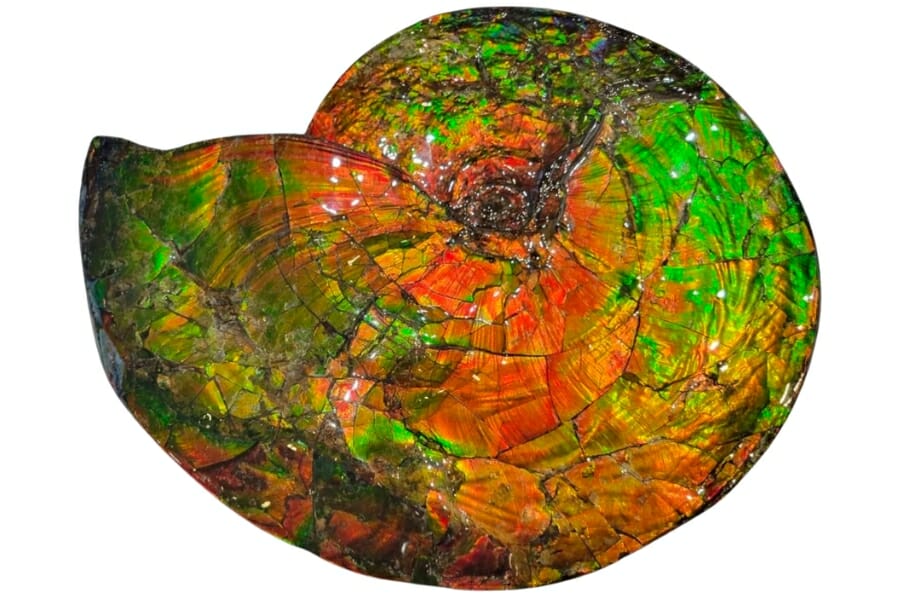
If you’re set on fossil hunting in New York, below are some of the most commonly asked questions by those who have gone here before you. We’ll answer each one of them in case you have the same questions in mind.
Can you find megalodon teeth or shark teeth in New York?
Yes, you can find shark teeth in New York, but finding megalodon teeth is highly unlikely. Our state’s geology primarily consists of deposits from the Devonian and Ordovician periods, which predate the megalodon.
However, there are locations in New York, such as along the shores of the Hudson River and in Staten Island, where fossil hunters have reported finding ancient shark teeth from species that lived long before the megalodon.
Is it illegal to collect fossils in New York?
Generally, it is illegal to collect fossils from state parks, state forests, and other protected lands without proper permits. On private property, though, you can collect fossils with the landowner’s permission.
However, if you’re hoping to hunt for fossils on public lands outside of protected areas, it’s crucial to familiarize yourself with our local regulations and guidelines. For more information, you can visit the official website of the New York State Department of Environmental Conservation (DEC) which regulates this activity.
Can you find dinosaur bones in New York?
Finding actual dinosaur bones is quite rare in New York. Our state’s geology is primarily comprised of rock layers from the Paleozoic era, which predates the Mesozoic era when dinosaurs roamed the Earth.
While we’re rich in fossils from the Devonian and Ordovician periods, these are mainly marine fossils like trilobites and brachiopods, not dinosaurs. New York has a significant record of Ice Age mammals and other ancient creatures, though.
Our Favorite Places To Buy Fossils In New York

If you don’t have ample resources to engage in a full-blown fossil-hunting expedition, you can still see and even take home fossils from New York. Below are some of our trusted local fossil stores that you can visit:
- Astro Gallery of Gems – 417 5th Ave, New York, NY 10016
- Astro West – 102 W 79th St, New York, NY 10024
- Evolution – Broadway, W 3rd St, New York, NY 10012
- Garvies Point Museum & Preserve – 50 Barry Dr, Glen Cove, NY 11542
- Rock Star Crystals – 146 W 26th St, New York, NY 10001
- The Hicksville Gregory Museum – 1 Heitz Pl, Hicksville, NY 11801

